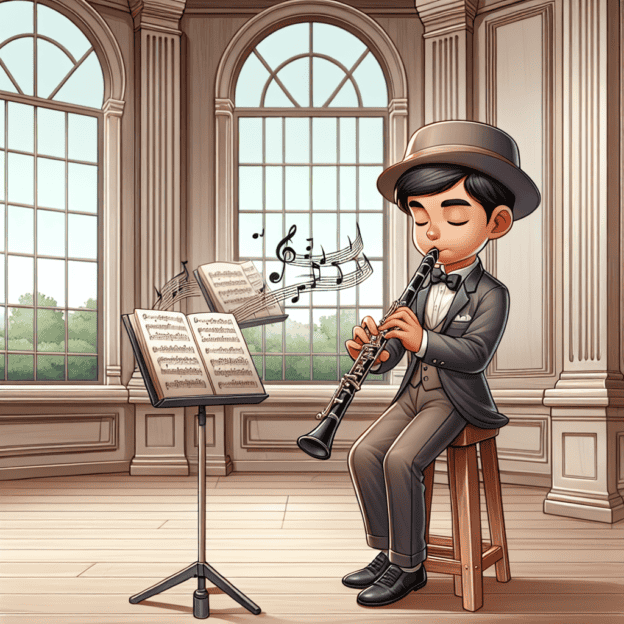The clarinet, beloved for its rich and varied tones, captivates musicians at every skill level. While finger placement and breath control are important, the embouchure plays a key role in producing a beautiful sound. Mastering the embouchure is crucial for a great performance. This guide walks you through common embouchure issues and how to solve them, with a nod to the quality standards set by Martin Freres.
1. Understanding the Clarinet Embouchure
The embouchure refers to how a musician forms their mouth and uses their lips to create sound on a wind instrument. For clarinet players, a well-formed embouchure results in a clear, focused tone and helps produce a wide range of dynamics and articulations.
2. Common Embouchure Problems
As you hone your clarinet skills, you might face these embouchure-related challenges:
- Weak Sound: An airy tone or lack of projection often stems from a loose embouchure or poor lip seal on the mouthpiece.
- Unclear Articulation: Difficulty with clean tonguing or smooth note transitions may indicate incorrect lip positioning or too much tension.
- Pitch Problems: Struggling to stay in tune? Inconsistent lip pressure could be affecting your reed control.
3. Components of a Good Clarinet Embouchure
To produce an effective sound, focus on these key elements:
- Lips: Cover your bottom teeth with your lower lip, creating a controlled cushion for the reed. Rest your upper lip on the mouthpiece.
- Jaw Position: Keep your jaw relaxed to avoid restricting airflow or putting unnecessary pressure on the reed.
- Tongue Placement: Your tongue's position greatly affects tone production. Keep it near the roof of your mouth, but relaxed for smooth airflow.
| Embouchure Component | Correct Position | Common Mistake |
|---|---|---|
| Lips | Bottom lip over teeth, top lip on mouthpiece | Biting with teeth, loose lip seal |
| Jaw | Relaxed | Tense, clenched |
| Tongue | Near roof of mouth, relaxed | Too low or tense |
4. Exercises for Improving Embouchure
Regular practice of these exercises can enhance your embouchure and address common issues:
- Long Tones: Practice holding consistent pitches and quality sounds over extended periods.
- Buzzing Exercises: Buzz on the mouthpiece alone to build lip muscle strength, improving consistency and control.
- Lip Flexibility Exercises: Work on moving your lips in various ways, like rolling or tightening and loosening, to increase flexibility.
5. Troubleshooting Your Embouchure
Spotting and fixing embouchure problems can greatly improve your playing. Here's how to troubleshoot effectively:
- Check Your Setup: Make sure your mouthpiece and reed combo fits your playing style and preferences.
- Evaluate Your Shape: Watch your embouchure shape as you play. It shouldn't be too tight or loose. Small adjustments can make a big difference in sound quality.
- Video Record Yourself: Watching yourself play can reveal areas of your embouchure that need work. This self-feedback is key for improvement.
6. The Role of Quality Equipment
Good equipment plays a big part in getting a great sound. Brands like Martin Freres are known for their quality, which can help your performance. Keep your instrument, mouthpiece, and reeds in top shape. A well-maintained clarinet is more forgiving of small embouchure mistakes than a poorly maintained one.
7. Incorporating Embouchure Techniques into Regular Practice
Adding embouchure exercises to your daily practice can lead to big improvements in your playing. Here's a suggested practice structure:
- Warm-Up: Begin with mouthpiece buzzing, then move to long tones.
- Technical Exercises: Practice scales or etudes with minimal finger movement, focusing on a relaxed embouchure.
- Repertoire: Use your improved embouchure while playing your pieces, concentrating on maintaining clarity and style.
8. Final Thoughts
Using the right techniques and paying attention to your embouchure can really change how you play the clarinet. Whether you're working on classical pieces or trying out jazz improv, keep aiming for excellence, as Martin Freres does, and keep working on your skills to play better.
Table of Contents
- 1. Understanding the Clarinet Embouchure
- 2. Common Embouchure Problems
- 3. Components of a Good Clarinet Embouchure
- 4. Exercises for Improving Embouchure
- 5. Troubleshooting Your Embouchure
- 6. The Role of Quality Equipment
- 7. Incorporating Embouchure Techniques into Regular Practice
- 8. Final Thoughts








